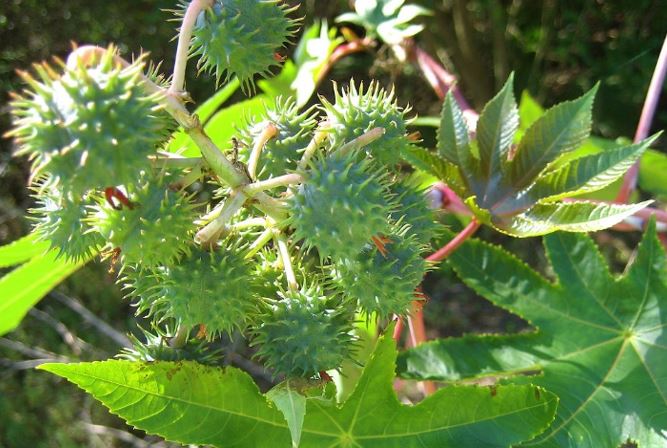Therapeutic and toxic effect of Panchangula (Ricinus communis Linn.) in Ayurveda
DOI:
https://doi.org/10.21760/jaims.10.9.16Keywords:
Vedic, Ayurveda, Agada, Eranda, Upavisha, Ricinus communis, Ricin, Toxic, Castor oil plantAbstract
Eranda (Ricinus communis), commonly known as castor, holds a prominent place in Ayurvedic medicine due to its therapeutic properties. Eranda (Castor oil plant) is highly regarded for its purgative, analgesic, and anti-inflammatory effects. This review aims to explore the traditional uses and pharmacological aspects of Eranda, highlighting its relevance in Agada Tantra for detoxification, healing, and its role in the management of various diseases, especially in the context of toxicity and poisoning. The paper examines the scientific evidence supporting these traditional uses and offers insights into the mechanism of action of Eranda and Ricin, a highly toxic protein isolated from the beans of the castor plant. Additionally, the review addresses the potential benefits and precautions associated with its use, emphasizing the importance of understanding its therapeutic potential in Ayurvedic practice while ensuring safety and efficacy. This comprehensive analysis intends to bridge the gap between ancient wisdom and modern scientific research, reinforcing the significance of Eranda in holistic healthcare.
Downloads
References
Deshmukh A. A review of the literature on Eranda (Ricinus communis Linn.) and its therapeutic applications and phytochemical components. 2023. ISSN: 2320-5091.
Nandy A. Principles of forensic medicine including toxicology. Kolkata: New Central Book Agency (P) Ltd; 2010. Chapter 33, p. 810.
Deshpandey M. Dravyaguna Vijyana. Part 2. Delhi: Chaukhambha Sanskrit Pratisthan; 2017. Reprint edition.
Almalkar VA Rao. A textbook of applied Dravyaguna Vijyana. Varanasi: Chaukhambha Vishvabharati; 2024. First edition.
Sastry JLN. Illustrated Madanapala Nighantu. Varanasi: Chaukhambha Orientalia; 2017. Reprint edition. p. 65.
National Center for Biotechnology Information. Ricin. In: StatPearls [Internet]. Treasure Island (FL): StatPearls Publishing; 2023 [cited 2025 Sep 7]. Available from: https://www.ncbi.nlm.nih.gov/books/NBK441948/
Biswas G. Forensic medicine and toxicology. 6th ed. 2024. Chapter 44, p. 592.
Gupta P. Naveen Agada Tantra Evum Vyavhar Ayurved. 1st ed. 2024. p. 177.
Rasetti-Escargueil C, Avril A. Medical countermeasures against ricin intoxication. Toxins (Basel). 2023;15(2):100. doi:10.3390/toxins15020100
Pandey K. Charak Samhita. Part 1. Sutra Sthana. Chapter 25, verse 40.
Bhandari C. Vanoushadi Chandrodaya. 11th ed. p. 74.
Tripathi KD. Essentials of medical pharmacology. 7th ed. New Delhi: Jaypee Brothers Medical Publishers (P) Ltd; 2015. Chapter 48, p. 675.
Katyayan A. Bhela Samhita of Maharsi Bhela. Varanasi: Chaukhamba Surbharati Prakashan; 2017. Sutrasthanam. Chapter 28, p. 143.
Tripathi H. Harita Samhita. Varanasi: Chaukhamba Krishnadas Academy; 2009. Chapter 14, p. 84.
Reddy KS Narayan. The essentials of forensic medicine & toxicology. New Delhi: Jaypee The Health Science Publisher; 2010. Chapter 29, p. 496.
Porte S. Agada Tantra Visha Chikitsa Vijana. 2nd ed. 2020. Chapter 12, p. 111–115.
Pandey K. Charak Samhita. Part 1. Sutra Sthana. Chapter 4, verses 9, 13, 17.
Misra B. Bhavaprakasa of Sri Bhava Misra. Part 1. Varanasi: Chaukhambha Sanskrit Sansthan; 1997. 8th ed. p. 300.
Shastri S. Yogaratnakar. New Delhi: Chaukhambha Publication; 2004. p. 164.
Pillay VV. Textbook of forensic medicine & toxicology. 19th ed. Hyderabad: Paras Medical Publishers; 2019. Chapter 30, p. 575.
McLain DE, Lewis BS, Chapman JL, Wannemacher RW, Lindsey CY, Smith LA. Protective effect of two recombinant ricin subunit vaccines in the New Zealand White rabbit subjected to a lethal aerosolized ricin challenge: survival, immunological response, and histopathological findings. Toxicol Sci. 2012;126(1):72–83. doi:10.1093/toxsci/kfr274
Jena J, Gupta AK. Ricinus communis Linn: a phytopharmacological review. 2012. ISSN: 0975-1491.

Published
How to Cite
Issue
Section
License
Copyright (c) 2025 Aaghya Shakyawar, Sushmita Soni, Urmila Shukla, Sharad Rathi, Anshu Malviya

This work is licensed under a Creative Commons Attribution 4.0 International License.














